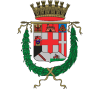Visitors and chroniclers writing in the fourteenth/fifteenth century describe Padua’s city walls as “superb” and “impregnable”.
The first ring of towers and fortifications was built in the thirteenth century, at the time of the City Commune, while the later rings were built as the city ruled by the Carraresi gradually expanded in the fourteenth century. And there can be no doubt that these –together with the Castle, the various Citadels and the Torre del Catena [Chain Tower, which guarded one end of the chain closing off a major waterway into the city] – must have made a formidable impression. They both protected and represented a flourishing city that was rightly proud of its own standing; after all, at the time of the Carraresi, Padua would see those extraordinary artistic achievements that are now at the basis of its application for recognition as a UNESCO World Heritage Site.
Little of those massive fortifications remains nowadays. The outer wall was replaced by new fortifications in the sixteenth century, even if – with some modifications – it had withstood a siege in 1509; and the second ring of walls was demolished to serve as a quarry for building materials. Thus all that is left is part of the inner circle of walls that dates from the time of the Commune, enveloped by the two branches of the Bacchiglione. Crenellated walls that stood twelve metres high and three metres thick, these fortifications too have gradually been eaten into by the expansion of private building work. Nowadays, there are only a few short stretches that give some impression of how imposing the original walls must have been.
The fourteenth-century judge Giovanni da Nono listed all nineteen of the city gateways by name, however only two of the main ones remain: Porta Altinate and the monumental Porta Molino. The other two survivors are rather more hidden away: one small city gateway, which gave access to carts heading for the city’s mills, is now tucked away behind the church of San Fermo, and the other, much more imposing gateway, was incorporated within the tower that was the western entrance gate to the Carraresi Castle.
Thanks to a special Comitato Mura, you can enjoy guided Sunday walks that make it possible to follow the course of the old city walls; explore old city streets; learn about the dense network of watercourses that once served as a source of power for the city’s mills and a means of transport for its population; identify the sites of churches and monasteries that no longer exist. All in all, these specially organised events are an opportunity to discover the hidden face of medieval Padua: consult www.murapadova.it












